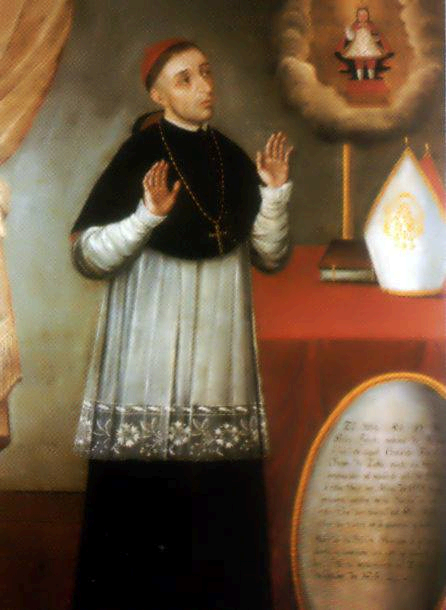The Diocese of Cebu was established in 1595 by Pope Clement VIII upon the request of King Philip II of Spain. Together with the Dioceses of Nueva Segovia and Nueva Caceres, Cebu became a Suffragan See of Manila. The Diocese of Cebu or “Santisimo Nombre de Jesus” comprised all the islands of the Visayan and Mindanao extending as far as the Marianas and the Calamianes in the Pacific.
Fray Pedro de Agurto, a native of Mexico and a religious of the Augustinian Order, arrived in Cavite in May 1595 accompanied by fifteen other Augustinian and by no less than the first Archbishop of Manila, Fray Ignacio Santibanez. When Archbishop Santibariez died in August 14 of that year, Bishop Agurto was designated to preach at his funeral. He took possession of the Diocese of Cebu the following October governing the Diocese with great dedication and piety.
Once acquainted with the condition of the Diocese, he ordained that the manner of administering the sacraments as well as the teaching of catechism be accommodated to the capacity of the native Filipinos. To achieve this Bishop Agurto convoked the First Diocesan Synod of Cebu attended by the diocesan and religious clergy of his jurisdiction. It started from Pentecost Sunday of 1600 lasting up to the following Friday. In that Synod the catechism which had already been translated into Cebuano was corrected. The work was entrusted to six experts in both Tagalog and Cebuano: two secular priests, two Augustinian and two Jesuits. The piety as well as the wisdom of the zealous prelate was reflected in the statutes of the First Synod.
Bishop Agurto made Pastoral Visitation of the circumscriptions in the provinces of Leyte and Samar. He himself preached to the Spaniards, but to the natives he preached with an interpreter. He died on October 14, 1608 and was buried in the Convent of St. Augustine in the City of Cebu whose Prior at that time was Fray Pedro Arce. Six months after,on April 24, 1609, upon the request of many pious citizens, his tomb was opened, and his body was found still incorrupt.

